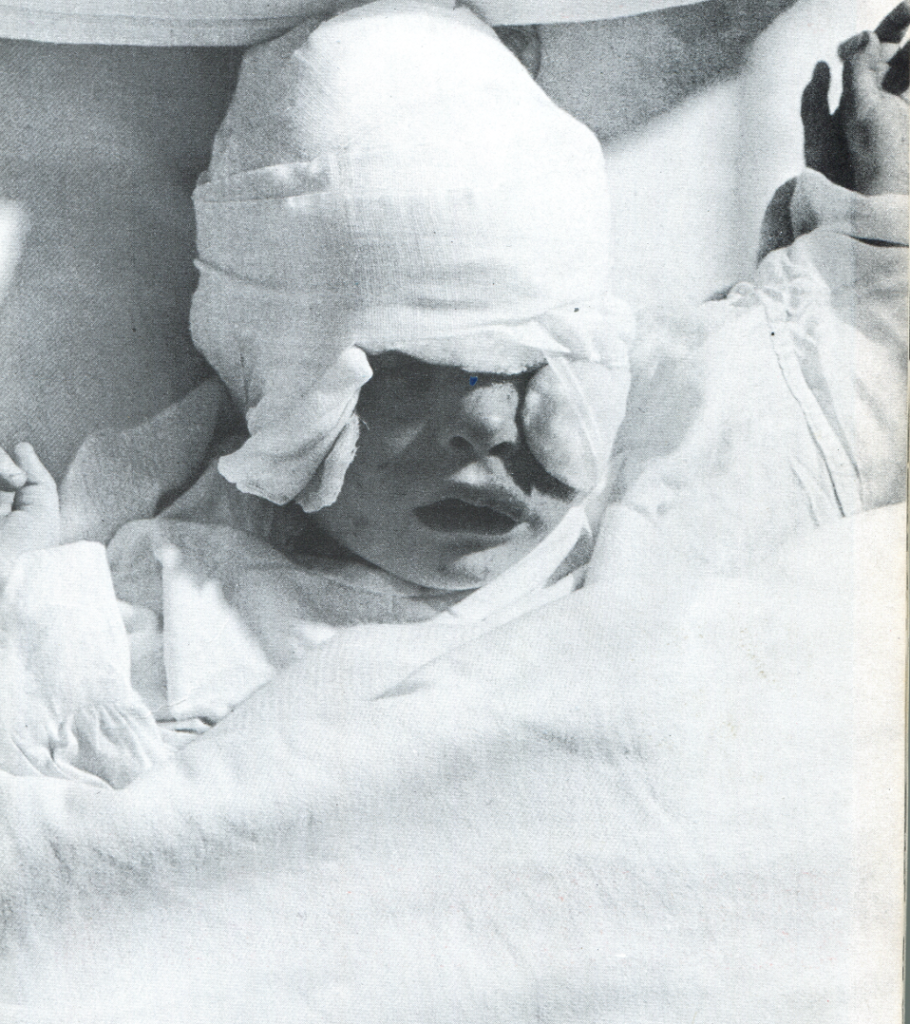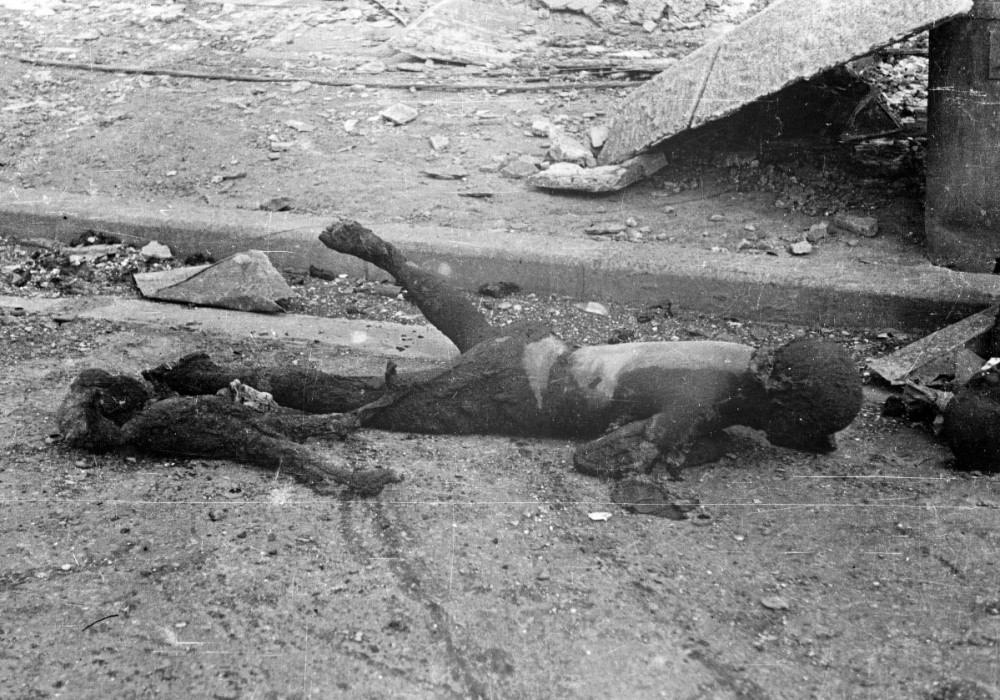When I was perhaps eleven years old or so I remember perusing a book of World War II photographs from Life magazine when I found this photograph.
The caption I remember (I cannot claim that my memory is necessarily veridical because all human memory is vague and plays) was something like this: “A little girl lies dying after the bombing of Coventry which has already killed her parents.”
That’s heavy to lay on an eleven year-old boy, at least as long as he is not a complete brute (I wasn’t, even if many are). I felt a sense of sick shock thinking this little baby girl, so gravely wounded that the whole top of her head including one of her eyes had to be covered in bandages, probably in terrible pain and lying dying surrounded by strangers in a wartime hospital, without even the mercy of a mother to comfort her. The image was nightmare fuel for me for some time thereafter, and in years subsequent it has returned to me in flashes of anger when have to listen to the blatherings of optimists and the spinners of popular theodicies. One almost wants to scream at people at times. “Look at this little girl! What could possible justify this?” The image might have also buried a nugget of antinatalism in my consciousness: if one of the possible fates a child can have in the world is this, then how can you justify having one?
Because I am afflicted with curiosity about why people turn out the way they do, I was moved recently to try to recover this little bit of my past. After some disappointments browsing among battered used books I found the image again, much as I remembered it visually but with a caption that somewhat surprised me.
“Margaret Curtis, 2” LIFE said under the picture above in its September 9, 1940, issue “is about to die.” Her mother, shielding Margaret with her own body from a German bomb had been killed, as had Margaret’s father and grandfather.
A year later a friend of the Curtises’ wrote LIFE that Margaret was alive…but was struck dumb, and that her mother was alive, too. That letter caused American neurosurgeon Dr. Henry L. Heyl in London to ask the magazine for help in locating the child for possible treatment. When she was found, it was learned that it was her brother Royston, 7, who was the speechless one. The doctor performed two delicate brain operations, and Royston talked again.1
Well, how very heartwarming. How very Life magazine.
I do not feel misled by my past, however. Even if little Margaret Curtis survived her bombing ordeal, even if she is now living a cozy existence somewhere in England as a 78 year-old grandmother, one knows perfectly well that even there have been plenty of other bombing victims in the world, many of them children just as defenseless and innocent as little Margaret. Going just by Wikipedia figures, which as far as I can tell are not wildly inaccurate (and might even be a bit low), total civilian losses from bombing on both sides in the Second World War are well north of a million dead. I submit that it is statistically improbable that all of them were competent adults who somehow deserved their fates.
I can’t help noting on the Life magazine volume in which I found again the picture of Margaret Curtis appears to contain no pictures whatever of civilian suffering on the “wrong” side of the Second World War. (There are a few pictures of the aftermath of the atomic bombing of Hiroshima, but they show only ruined and flattened buildings, not ruined or flattened human beings.) In the interests of historical justice I propose to remedy this deficiency. Here is what is left of a mother and child after the American firebombing of Tokyo in March 1945.
This photograph is also from Wikipedia (accessed July 9, 2016), where it accompanies the article Bombing of Tokyo. Here is the caption:
Koyo Ishikawa (1904-1989) took this photograph. This shows the charred body of a woman who was carrying a child on her back; her back itself was not burned. Taken on around 10 March, 1945.
Somehow I doubt that any heartwarming story about how mother or child were later found alive and well will ever turn up.
***
Notes
1David E. Scherman, ed. Life Goes to War: A Picture History of World War II. (New York: Pocket Books, 1978). p. 75. Back to main text.



Doctor,
As usual your post is very interesting. The Allies were the good guys, so what did you expect? Greetings from Paraguay. Raúl